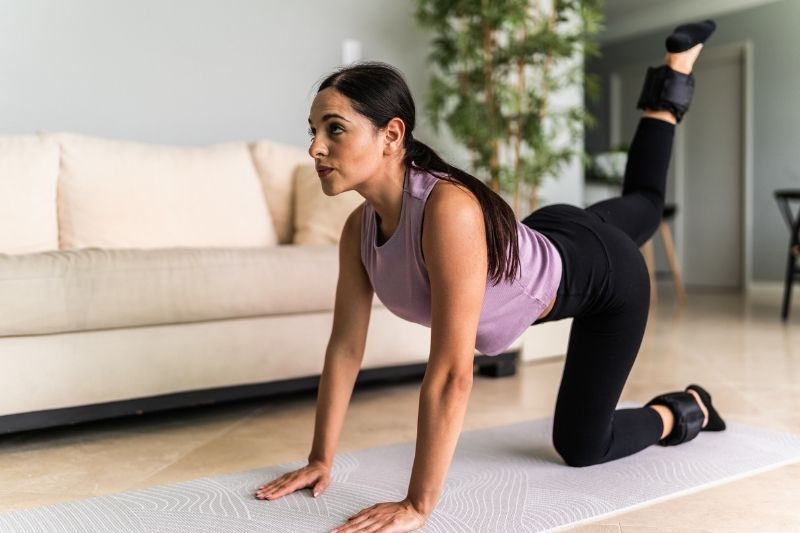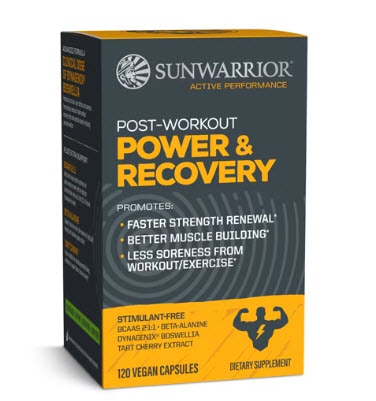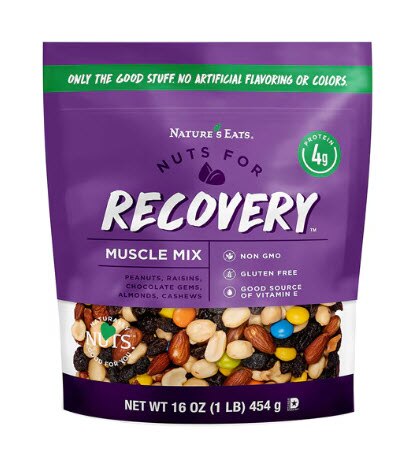Whether you are walking, running or just going about your daily life activities, wearing ankle weights, wrist weights or a weighted vest at the same time may help you boost the intensity of the activity and reap additional benefits.
But, is wearing a weighted vest while running safe? Do ankle weights burn calories while you walk?
Below, we discuss the benefits of wearing weighted vests and other wearable weights while exercising. We also provide tips for getting started with wearable weights and point out potential risks to be mindful of.
What are wearable weights?
There are several different types of wearable weights that can be used to increase the intensity of structured workouts or any physical activity.
Ankle Weights
Ankle weights are flexible weighted cuffs filled with sand, iron filings or other forms of weight that wrap around your ankles. They are usually secured with Velcro or buckles. Ankle weights generally weigh between 1 and 10 pounds.
Wrist Weights
Wrist weights typically have a similar structure to ankle weights, but they are significantly lighter because the muscles in the upper body are smaller and weaker than the muscles in the lower body.
Weighted Vests
Weighted vests come in a variety of shapes or designs. Some are filled with sand or iron filings and have a set weight, whereas others have removable weights so that you can adjust how much the weighted vest weighs. The vest might zip up and have additional buckles to adjust the fit, while some weighted vests are more of a stripped-down X shape that distributes the weight across the shoulders and chest, but doesn’t cover the full torso.
Weighted Garments
The latest addition to the wearable weights market is weighted workout clothes, such as weighted leggings and weighted compression tops. These clothes usually use small weighted nubs spaced evenly across the fabric to distribute the weight. Most weighted leggings and such only weigh 1-2 pounds, but this type of activewear can be a great way to add resistance worn throughout the day.
What are the benefits of working out with wearable weights?
There are several potential benefits of working out with wearable weights, such as the following:
- Increasing exercise intensity by adding resistance
- Boosting the number of calories you burn in your workout or during the activity
- Strengthening your muscles (again, by adding more resistance)
- Increasing bone density
- Improving athletic performance
- Providing a relatively seamless option to incorporate some strength training into your fitness routine
Are there any risks of working out with wearable weights?
As with most things in life, working out with wearable weights isn’t a magic bullet that will suddenly transform you into a svelte, fit individual.
In most cases, ankle weights, weighted vests and certainly wrist weights don’t add a significant amount of weight, so working out while wearing any of these wearable weights may not fully substitute for a traditional strength training session lifting weights in the gym.
In other words, strapping on 1-pound Bala Bangles for a walk won’t build as much muscle in your arms as doing three sets of dumbbell curls, triceps extensions and overhead presses with 15-pound dumbbells. Likewise, wearing ankle weights on a hike probably won’t strengthen your quads and glutes as much as heavy back squats, kettlebell swings and dumbbell step-ups.
All this is to say it is important to be realistic about the potential strengthening benefits of working out with wearable weights versus regular weightlifting.
Moreover, exercising with wearable weights has the potential to increase your risk of injury. The injury risk will depend on several factors, such as the following:
- the type of wearable weight you are using
- the type of exercise you are doing
- the intensity and duration of the activity
- your fitness levels and abilities
For example, according to Dr. Edward R. Laskowski at the Mayo Clinic, brisk walking and running with ankle weights is not recommended because it can increase the risk of injury. We can extend these parameters to include any repetitive cardio activity such as hiking, using the elliptical machine, stair climbing etc.
The reason that wearing ankle weights for cardio is contraindicated is that having the weight located at the end of the long lever of your leg puts additional stress on your hip, knee and ankle joints. The body experiences the relatively light ankle weight as feeling quite heavy since it is located at the far end of where your leg attaches to the pelvis. Plus, when you lift your leg up as you swing it during the walking or running gait cycle, the added resistance pulls (or distracts) the joints.
A similar risk is seen when wearing wrist weights for running or walking. The weight is located far from the shoulder joint, so it can pull on the shoulder and elbow, causing pain and potentially damaging muscles, tendons, ligaments and other connective tissues.
Weighted vests have the benefit of centralizing the additional resistance over your core. This potentially reduces the risk of pulling on the joints at the ends of the extremities, but it doesn’t mean that working out with weighted vests is automatically safe.
Wearing a weighted vest that is too heavy for your current strength level or that doesn’t fit properly can cause back pain or neck pain. It may bother the joints in your lower body, throw off your center of balance, increase the risk of falling and cause you to compromise your form during the activity.
Moreover, adding any form of weight to your body increases your effective body weight. Therefore, running in a weighted vest increases impact forces when you land. This can amplify the risk of bone injuries and joint injuries, particularly if you have poor form, are not wearing proper footwear or overuse the weighted vest in your workouts without incorporating enough rest.
It is very important to listen to your body and pay attention to any signs of discomfort while working out with wearable weights. Furthermore, you should always incorporate wearable weights into your routine gradually.
After your weighted vest workouts, refuel with a protein-rich snack and drink plenty of water. If you sweat a lot, consider an electrolyte replacement beverage.
How much should a weighted vest weigh?
Weighted vests and ankle weights come in a variety of different weight options. Choosing the appropriate weight will help decrease the risk of injury while maximizing the benefits of working out with a weighted vest or other wearable weights.
Always start on the conservative side. This means that it is better to do your first couple of workouts with a weight that feels somewhat “too light.” Give your body time to get accustomed to the additional weight and the ways in which wearing a weighted vest or ankle weights alters your biomechanics as you move.
It is recommended to start with just 5-10% of your body weight with a weighted vest. For example, if you weigh 180 pounds, use a 9-10 pound weighted vest for your first few weighted vest workouts.
Give your body at least one to two days without the weighted vest or wearable weights between each of your first several wearable weights training sessions. This will give your body time to recover and also time for you to check in with how your body is feeling after a wearable wait exercise session to see if you have any lingering aches or unusual soreness.
Additionally, if you’re just getting started on a fitness routine or trying a new activity, skip the wearable weights until you have mastered the proper form and technique using just your body weight, and you’ll feel competent and fit enough to handle the activity. Then, slowly incorporate a weighted vest or ankle weights as you get stronger.
Finally, if you have arthritis, joint pain, chronic or acute injuries or other health conditions, it is important to speak with a physical therapist or your doctor before incorporating a weighted vest into your fitness routine.
The takeaway: Should you use wearable weights during workouts?
Overall, working out with a weighted vest or other forms of wearable weights is a convenient way to boost the intensity of your workouts. This, in turn, helps you burn more calories, build bone density and strengthen your muscles. However, it is important to slowly ramp up the amount of weight you are using as well as the frequency and duration of your sessions with a weighted vest or other wearable weights to reduce the risk of injury.




